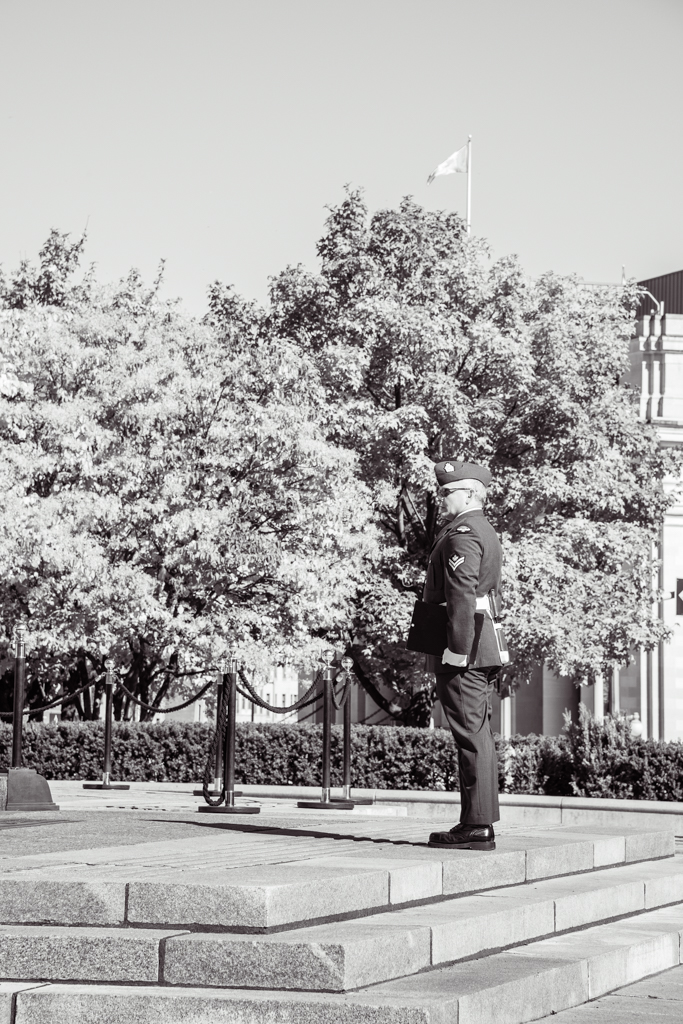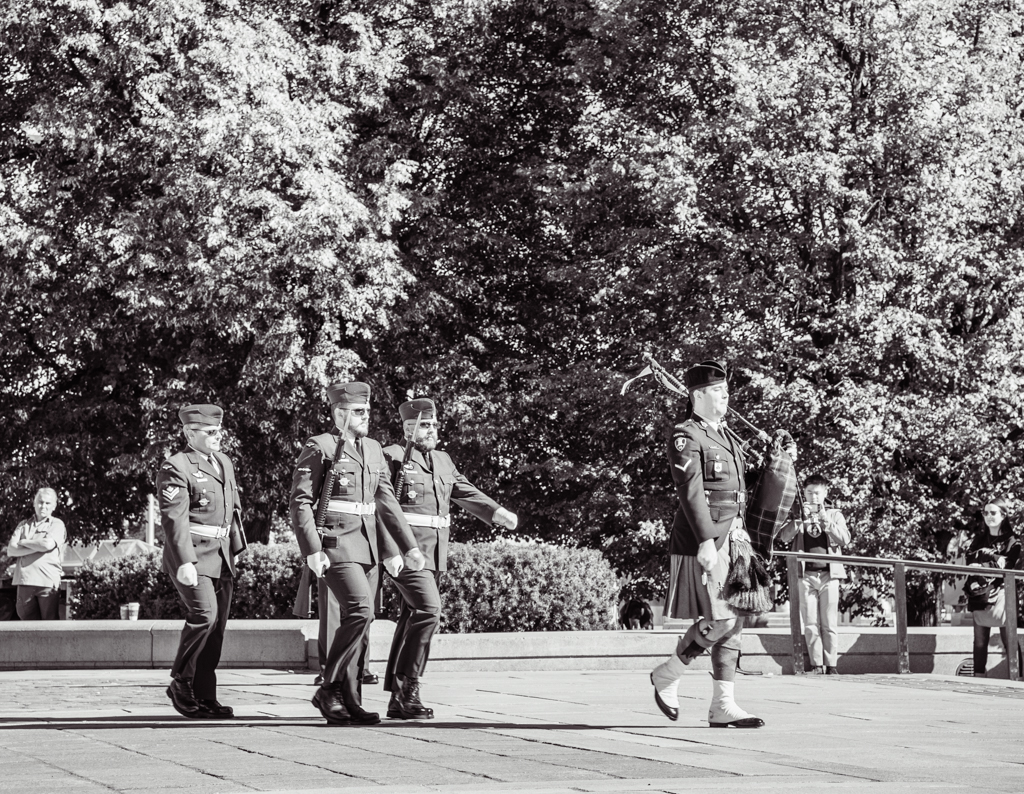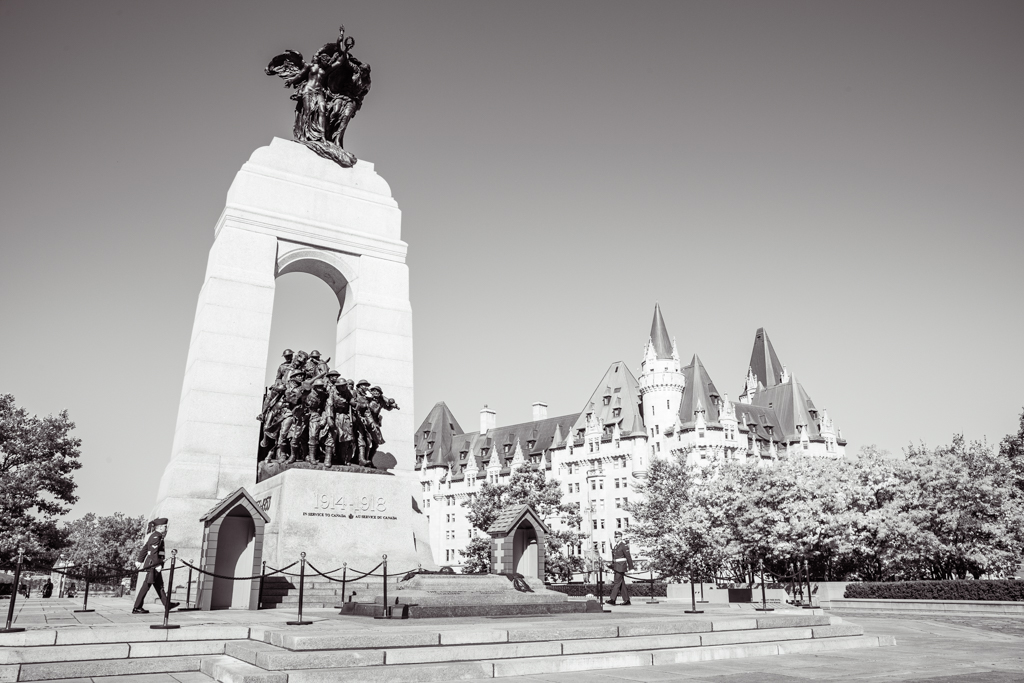Inside the Story
The National War Memorial: A beautiful and powerful Tribute in Motion (2019)
Each day, beneath the watchful bronze figures of the National War Memorial in Ottawa, a quiet ceremony unfolds — a ritual of honor, memory, and national pride. The Changing of the Guard, performed with polished precision and heartfelt reverence, is more than a symbolic gesture. It is a reminder that remembrance is a living act — renewed daily by those who serve.
A moving photo essay capturing the National War Memorial ceremony and the Changing of the Guard in Ottawa. (You can find other interesting essays on my blog page)
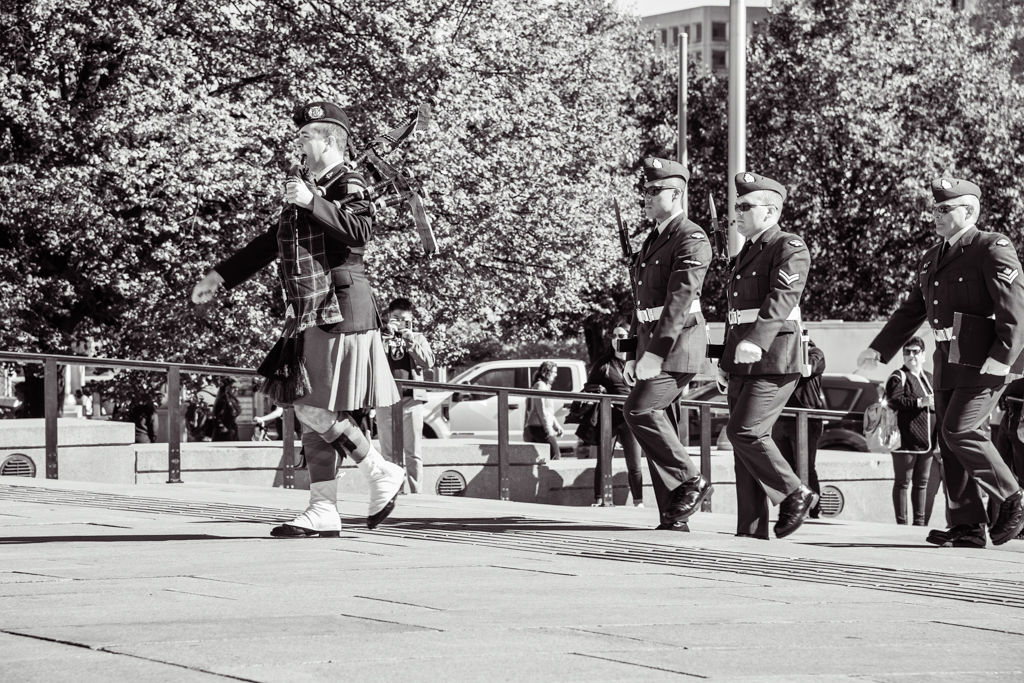
The sound of the bagpipe, rising above the hum of downtown Ottawa, signals something special. Passersby pause. Tourists gather. Cameras rise. The Changing of the Guard at the National War Memorial has become more than a military tradition — it’s a living spectacle, drawing crowds who are moved not just by the music, but by the discipline and symbolism of the ritual. It connects the everyday to the eternal in a uniquely Canadian way.
The bagpipes lead the way — not just in sound, but in solemn tradition.
In this monochrome photo essay, I follow the path of the soldiers as they arrive, exchange duties, and stand watch at the Tomb of the Unknown Soldier. Through these frames, I sought to capture not just military formality, but the dignity, presence, and humanity beneath the uniform — and the silent conversations between place, people, and memory.


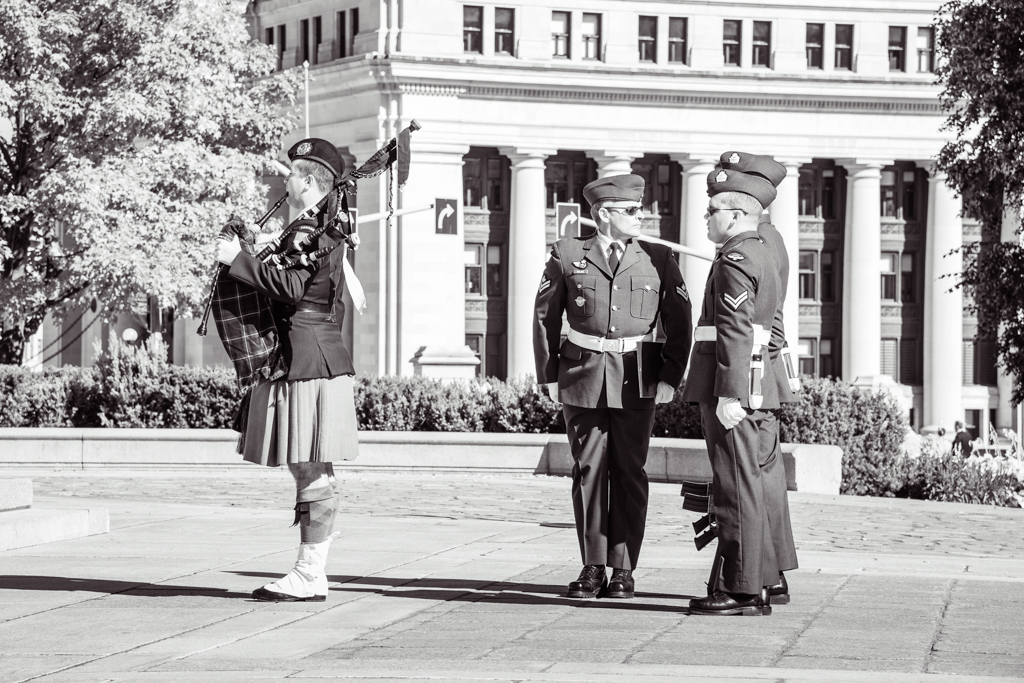
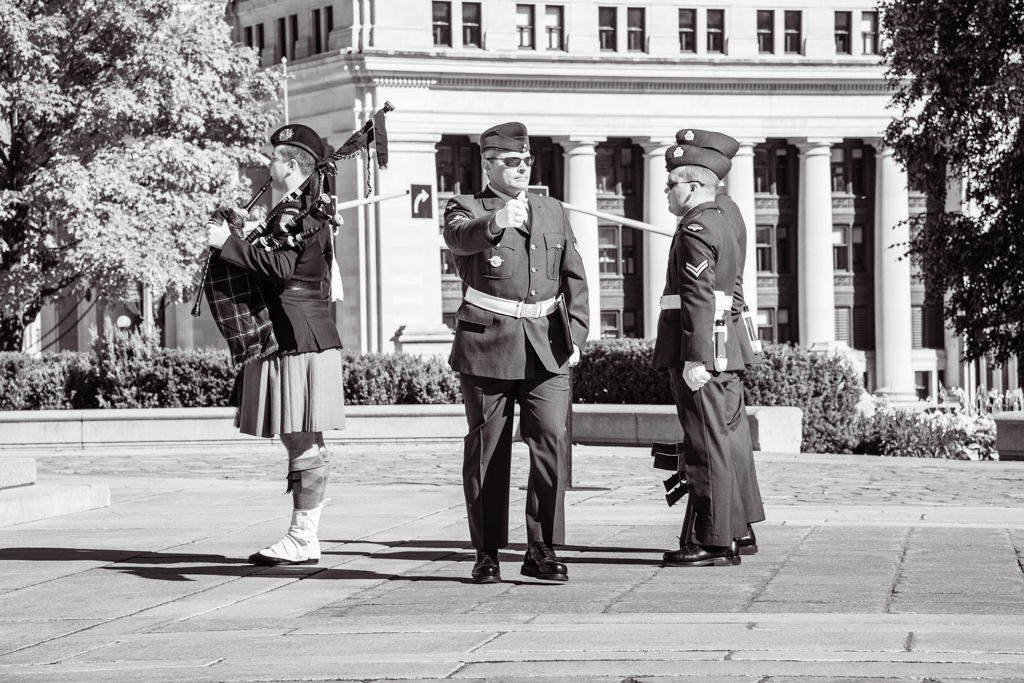
With each step, history echoes — steady, measured, unforgotten.

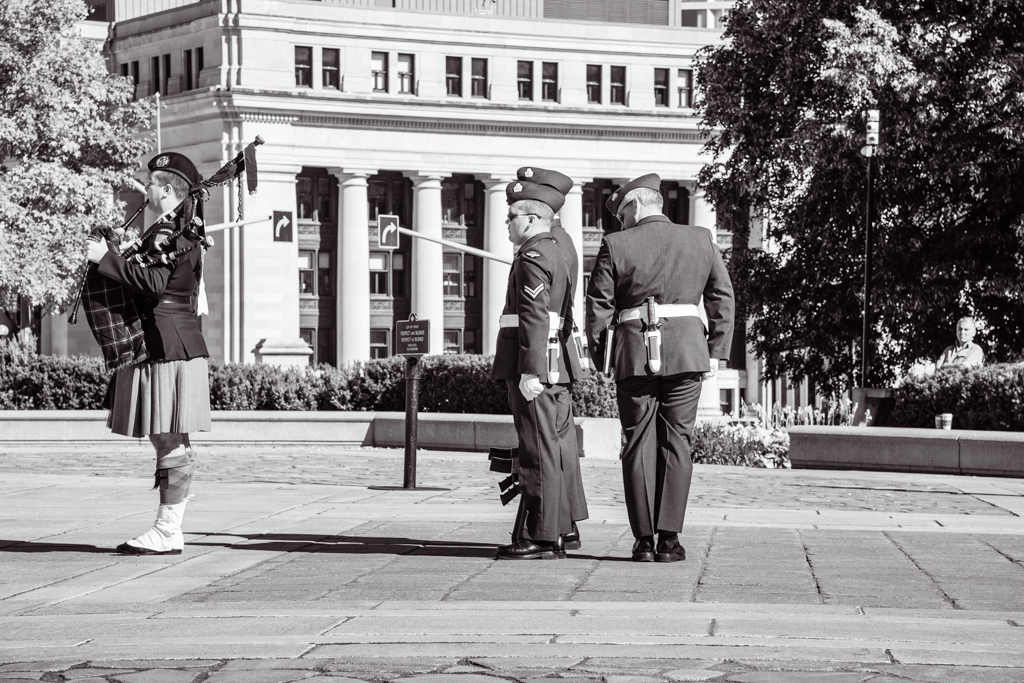

As the ceremony unfolds, one of the most compelling moments is the officer’s formal inspection of the incoming guard. With measured steps and unwavering posture, the officer ensures that every element — from uniform to bearing — reflects the dignity of the role. It’s a quiet yet powerful exchange of responsibility, underscoring the precision and respect that defines the National War Memorial ceremony.
One guard steps back, another steps forward — time passing in uniform.
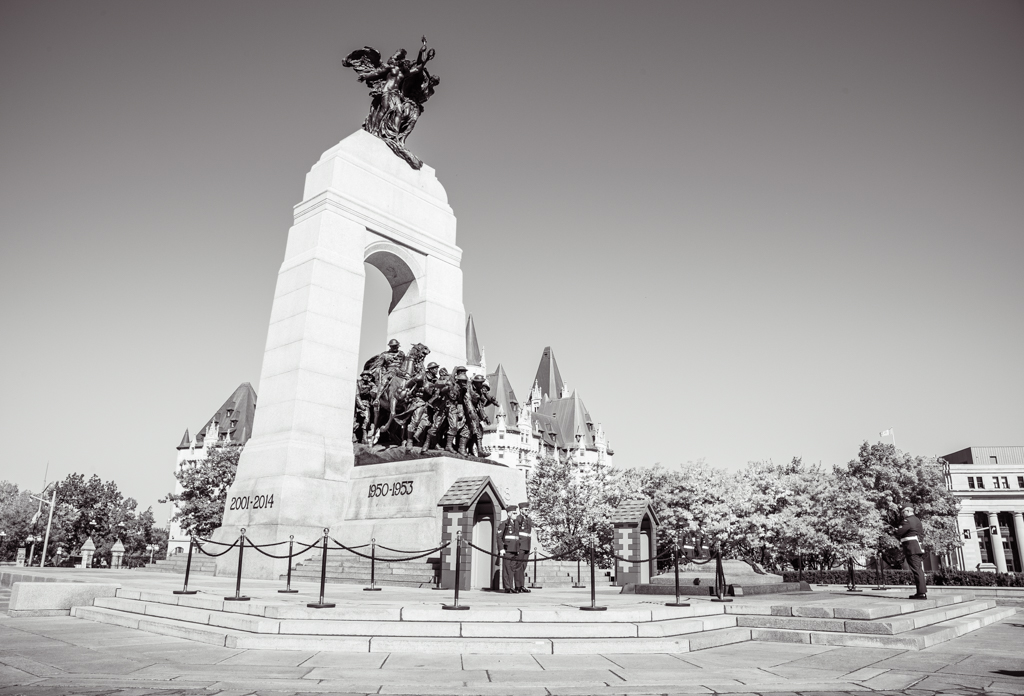
A silent salute beneath the maple flag — memory honored in posture alone.
Nestled at the heart of downtown Ottawa, the National War Memorial sits in quiet dialogue with the pulse of the capital. Behind it, the grandeur of Parliament Hill rises in solemn watch. To the east, the historic Château Laurier offers a backdrop of old-world elegance, while the National Arts Centre and the intersecting arteries of Elgin and Wellington Streets carry the rhythm of daily life. This convergence of culture, history, and movement makes the memorial not just a site of remembrance, but a living stage — where solemn rituals unfold against the enduring presence of the nation itself.
Here, remembrance is not a ceremony of the past — but a promise renewed.
In the quiet precision of this daily ritual, we are reminded that remembrance is not reserved for grand gestures or calendar dates — it lives in the steadfast steps of service, in the stillness of a salute, and in the silent promise to never forget. At the heart of Ottawa, the Changing of the Guard stands not only as tribute, but as testament: that memory, when honored daily, becomes legacy.
The National War Memorial, unveiled in 1939, was designed by British sculptor Vernon March. Its towering granite arch is crowned by twin bronze figures symbolizing peace and liberty, while beneath it, a procession of 22 bronze soldiers, sailors, airmen, and support personnel marches forward — a timeless tribute to Canada’s service in war. At its base lies the Tomb of the Unknown Soldier, added in 2000, grounding the monument in a deep and personal silence. Together, these elements form a visual and emotional anchor — not only to the past, but to the enduring ideals of sacrifice, unity, and remembrance.
Resources: Government of Canada: Site Tomb of the Unknown Soldier National War Memorial
